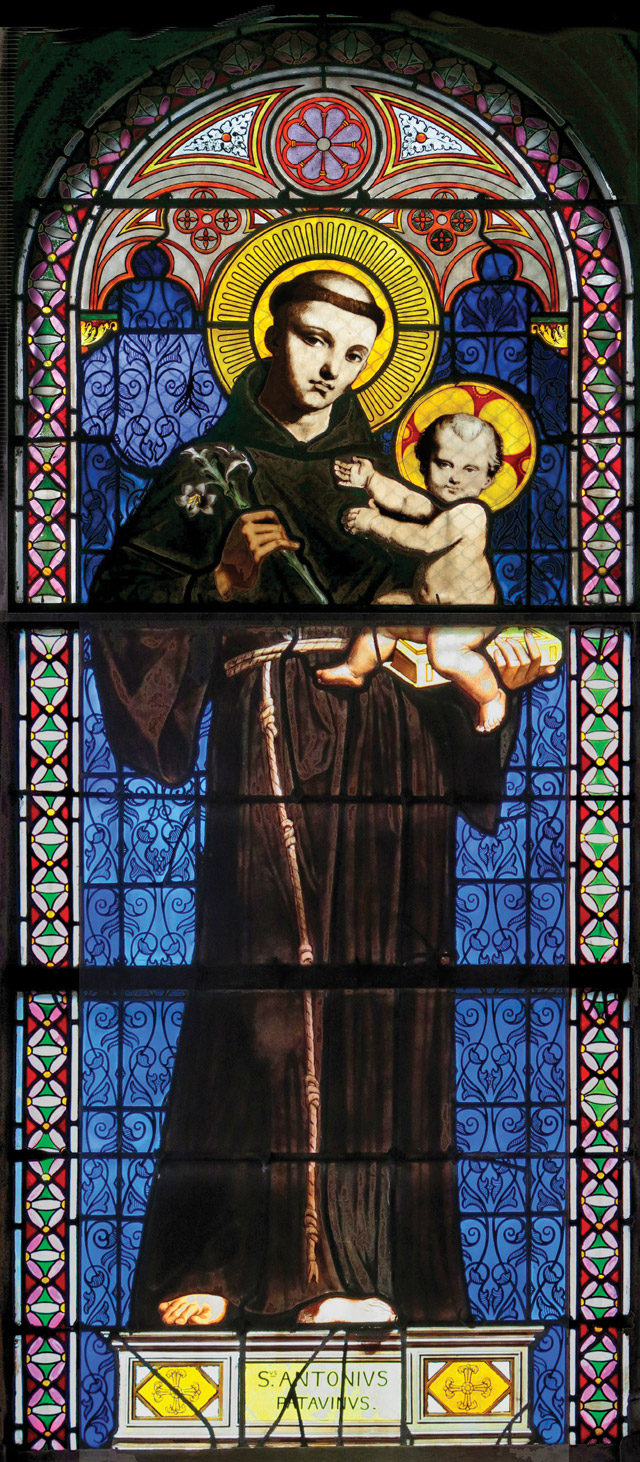Anthony of Padua
History

Saint Anthony of Padua, ca. 1843-1844 Jean-Auguste-Dominique Ingres, French, 1780-1867, stained glass window fabricated from the artist’s design, 86 5/8 x 36 3/8 in. Chapelle St.-Ferdinand, Porte des Ternes, Paris. Photo: Philippe Bedin.
Images of biblical figures have historically been fashioned in the likeness of the white ruling class—disregarding historical or geographic accuracy and legitimizing the existing European hierarchies. In his paintings based on religious subjects, Kehinde Wiley subverts this tradition by inserting young men and women of color into the canon of biblical figures, calling attention to this misrepresentation.
In the stained glass window which inspires this portrait, the Franciscan Saint Anthony of Padua holds a lily, the infant Jesus, and a Bible to symbolize his purity, his theological scholarship, and his gift as a preacher in dedication to Christ. Unlike Saint Anthony’s pose, meant to convey a Franciscan commitment to poverty and humility, Wiley’s portrait is infused with worldly seduction: his Anthony’s skin is flawless, his lips are pink, and his gaze, looking down at us, is seductive and empowered.

